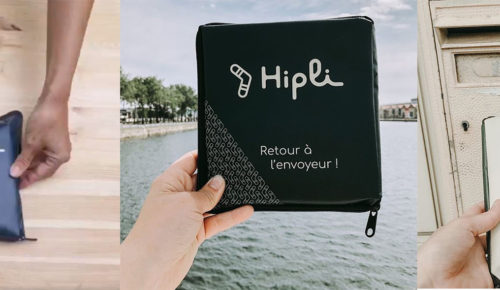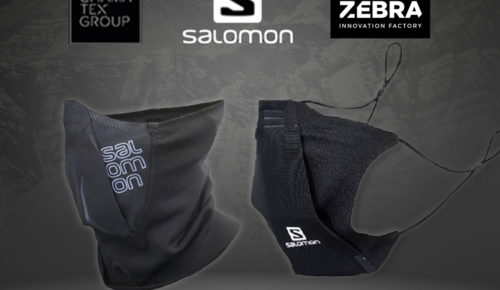What are the key steps to successful packaging design?
What are the key steps to successful packaging design? When a company launches a new product, the teams involved in the development process often focus on the qualities and benefits of the solution. It is not uncommon for the need to create a packaging design to be forgotten in the rush. Yet packaging is one […]
What are the key steps to successful packaging design?
When a company launches a new product, the teams involved in the development process often focus on the qualities and benefits of the solution. It is not uncommon for the need to create a packaging design to be forgotten in the rush. Yet packaging is one of your best selling features. According to marketing specialists, it is the decisive medium for conveying the brand’s image and values. It is this packaging that will trigger the act of purchase. But it does much more than that, since it also creates a bond between the brand and the customer.
For many years, marketers have been relying on the persuasive power of packaging. However, the classic concept of product packaging is now changing, with more creativity and design being incorporated. We will see why and how this trend can help to distinguish a product from others. In this article, we’ll take a look at the key steps to creating a truly successful packaging design.
From classic packaging design to packaging design
In the past, packaging was about making the product visible. Packaging designers relied on the visual potential of their packaging to make their product stand out from the crowd. For example, on the shelves of a supermarket. The objective was to attract the eye, to arouse the desire and interest of the potential customer. Then, to provide the expected answers, with the aim of convincing and triggering the act of purchase.
A customer looking for the ideal product often reacts to external and visual stimuli. This is why the design of packaging is so important. A packaging design must convey the company’s brand image, but also capture the customer’s attention. The visual aspect is crucial. Successful and innovative packaging attracts the eye. The customer is then more inclined to spend some time with the product: they look more closely at the packaging and may even consider buying. The criteria for the attractiveness of the packaging include elements as varied as the text or slogan, the shape, the material and the colours of the packaging.
Today, the visibility strategy is no longer enough. This does not mean that it should be abandoned, but rather that it should be implemented in order to develop a successful packaging design. The creation of product packaging is a delicate stage, to which the teams involved in the project must devote all the attention it deserves. At this stage, it is important to avoid any clumsiness or missteps and it is essential to understand the customer’s choice criteria. The definition of the target audience plays a key role, as innovative packaging will not be created in the same way for an older or younger group of buyers. Each target demographic has its own criteria, which you need to use to your advantage.
These criteria change over time. A few years ago, for example, ecology was not really a selling point. Today, however, many target groups are committed to the concept of sustainability and appreciate environmentally friendly and at least recyclable product packaging. Customers tend to favour brands that share their values, such as ecology.
Today, buying habits are constantly changing, with an increasing share of the Internet. The adaptation of marketing strategies, with the development of new packaging design concepts, is becoming a major challenge.
How can new consumer factors be taken into account in packaging design?
Marketing specialists are highlighting various exogenous factors, which packaging design developers can no longer ignore. For example, the health crisis has changed the situation, with an increased share of distance purchases. Packaging must therefore take into account the convergence of offline and online purchases, which is proving to be just as decisive as concerns about ecology and the environment.
Environmental values and their impact on purchasing behaviour are an excellent example of how external factors influence consumer decisions. It is no longer just about the intrinsic quality of the product, but about added values. This is why packaging design nowadays gains from being more focused on the human being as such, rather than as a mere consumer.
Today’s customers are more aware and want to share their human and ecological values with the brand they choose. Packaging design therefore plays a fundamental role, in that it is able to respond to new demands, such as the search for information. The use of QR codes on packaging allows customers to access databases and augmented information, thanks to digital technology.
Packaging must also meet the challenges of new consumer habits. It is necessary to create visuals that adapt to multi-channel communication. The concept of packaging is therefore expanding and changing. It includes not only the classic product packaging, but also other information supports, better adapted to digital media.
In addition, packaging design can now turn to movement, mobility, the use of videos or interactive media. Whereas traditional packaging offers tactile sensations to the customer and seeks to seduce them by this means, in the digital world this gap can be filled by visual and sound effects. One of the main challenges is to achieve responsive design, so that it can be visible and attractive on the different channels, including when consumers order a product for the first time via a drive-through mobile application.
The key steps to successful packaging design
- Focus the user experience on the human element
- Take into account the online dimension of purchases
- Pay more attention than ever to the brand image
- Use the resources of responsive design
- Combine digitalization and sustainable development.
Would you like to implement a successful and truly innovative packaging design, fully in tune with today’s world? Don’t hesitate to ask an agency specialising in innovation management to assist you.









